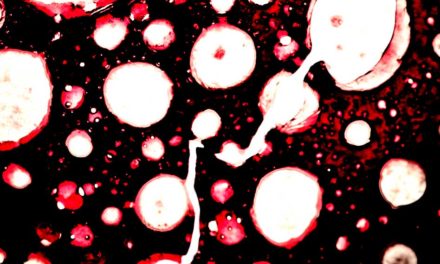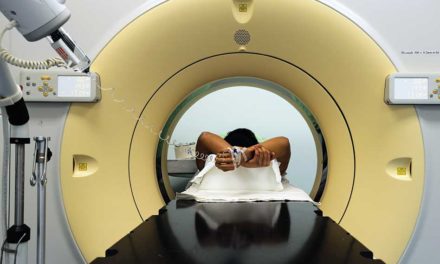
Verna Vanderpuye (Left), Consultant Clinical Onocologist, Korle Bu Teaching Hospital, Accra, Ghana and Naa Adorkor Aryeetey (Right), Specialist Radiation Onocologist, National Centre For Radiptheraphy and Nuclear Medicine, Accra, Ghana
The life expectancy of Ghanaians continues to improve and along with it comes higher incidence of cancers. Ghana is fortunate to have radiation therapy facilities. The National Centre for Radiotherapy and Nuclear Medicine in Accra is the premier centre established in 1997. Though faced with challenges, it stands tall in the sub-region as a centre of excellence for treatment and training. With continuous upgrades in technology and skills, improvements in patient outcomes are expected.
Ghana attained low-middle-income status in 2012 following consistent growth in the gross domestic product (GDP) and human development index. Ghana has a GNI of US$ 3,500 as at 2013, 5% expenditure of total GDP is on health, 12% of the total government expenditure is spent on health and 44% of the total health expenditure is from private expenditure. The population of the country has also increased to five times its population at independence in 1957 with an estimated current population of 27 million. There has been significant improvement in the management of both communicable and noncommunicable disease, with attendant improved life expectancy for Ghanaians of 64 years at present. With improved life expectancy, diagnosis, HIV infection and the adoption of sedentary life and unhealthy dietary habits, the incidence of cancer has increased and so has the demand for quality cancer care.
National cancer statistics
Reliable statistics on cancer and cancer care from Ghana are lacking. Unlike other communicable diseases that are recorded throughout the nation, cancer incidence is not. The GLOBOCAN data for Ghana (Fig.1) is based on estimates and extrapolations. Several international institutions have made attempts to collaborate with government and hospitals to establish credible cancer data.
In 2012, the hospital-based cancer registry (Fig. 2) based in Komfo Anokye Teaching hospital in Kumasi published its first preliminary data (1) followed in 2013 by that of the Korle Bu Teaching Hospital, Accra (Table 1) (2). The relevance of local data is depicted in the observation that although cervical cancer is noted to be the prevalent female cancer by Globocan, local data depicts cervical cancer as second commonest cancer after breast cancer. There are plans to expand these registries into population based registries to provide more realistic information to help with future planning.
National efforts at cancer control
As part of the country’s effort to improve cancer care, the National Cancer Control Programme was launched for 2012–2017 but is yet to be implemented (3). Several international organizations including the World Health Organization, International Atomic Energy Agency and Africa Oxford Cancer Organization (AFROX) have been instrumental in the development of this policy document.
The parliament of Ghana passed the Public Health Act in 2011. Since then, the government has begun to implement action plans and strategies aimed at reducing obesity, unhealthy diets, alcohol and tobacco use.
The present Ghana immunization programme includes hepatitis B virus vaccination aimed at reducing the incidence of hepatitis B infections and consequently the incidence of hepatocellular carcinoma, the current commonest male cancer and the commonest cause of male cancer deaths (1). The country has had excellent coverage for hepatitis B vaccination (98%) since its inception in 2002 (4).
Human Papilloma Virus vaccination for girls aged 9–11 years is being piloted under the Gavi alliance was piloted in three regions of the country (5). The vaccines are however available for sale in only a few urban private health-care facilities but are considered to be expensive. Improving accessibility and affordability will have far reaching benefits in the fight to control one of the commonest female cancers in the country. Ghana was one of the initial countries chosen to pilot the visual inspection with acetic acid (VIA) method for low-cost cervical cancer screening spearheaded by the Gates Foundation in 2008. Six other African countries served as demonstration sites, but Ghana was the only country unable to implement it as a screening policy (6). VIA is performed in few parts of the country. Civil society including faith-based health organizations have programmes in some parts of the country performing self HPV DNA testing in combination with other cervical screening methods.
There is a national health insurance scheme which requires payment of a yearly premium to access medical care. Though most basic procedures are covered under this scheme, cancer screening and cancers other than cervical and breast are not comprehensively covered. There are ongoing discussions to improve the coverage of evidence-based screening test and improved coverage for common cancers and paediatric cancers.
Current state of radiotherapy services
Considering that radiation therapy plays a pivotal role in the management of cancer, it is unfortunate that only 25 out of 54 countries in Africa have radiotherapy facilities as at 2013 (7). Ghana is fortunate to be amongst the few countries with radiotherapy facilities. However, like most low- to middle-income countries, she lacks adequate numbers of trained professionals, equipment and other logistics required for comprehensive management of cancers. Ghana can boast of three installed radiation therapy machines which include two conventional simulators, two modern Cobalt 60 teletherapy machines in the two national treatment centres; one in capital Accra located in the south of the country and the other in Kumasi in the Ashanti region located in the middle of the country and a private treatment facility in the capital Accra has a CT simulator and a linear accelerator.
The radiotherapy centre in Accra was established in 1997 in collaboration with the International Atomic Energy Agency (IAEA) to provide care for Ghanaian cancer patients. It has proven to be a centre for cancer patients from Togo, Benin, Côte d’Ivoire, Burkina Faso, Liberia and Sierra Leone and even Nigeria on occasion. Previously, Ghanaian cancer patients had to travel outside the country to India, the Americas and Europe to access care and patients who could not afford this were managed with palliative intent as surgery and chemotherapy were the only forms of treatment available for solid tumours. The centre in Kumasi was established in 2004 again in collaboration with the IAEA, whilst the Swedish Ghana Medical centre in Accra, a private venture was established in 2013. All three facilities in the country have capabilities for 3-Dimensional treatment planning.
The country has an estimated 0.1 machine per million patients which is far below the expected 1–3 machines per million patients in Africa and 4–8 per million in developed countries (8). The current estimated teletherapy unit deficit is -19 (9). Mauritius, South Africa, Tunisia and Egypt have between 2.36 and 0.93 machines per million patients which is much higher than Ghana (8, 10). Two additional linear accelerators located in the national centres were commissioned by the second quarter of 2016. A fourth facility is planned for the northern sector.
The National Radiotherapy Centre in Accra has a high dose rate Cobalt 60 brachytherapy machine and also provides permanent brachytherapy with radioiodine for the management of prostate cancer and capsules for management of cancer of the thyroid. The facility in Kumasi provides low dose rate cesium brachytherapy services for cervical cancer management but expects to install a new high dose rate brachytherapy equipment by the end of the year. The Ghana Atomic Energy Commission serves as the regulatory body for radiation services in the country.
The major technological drawback is the unreliable and unstable electricity supply from the national grid which invariably affects the output of these sophisticated and delicate equipments.
The actual utilization rate of radiotherapy services in Ghana is yet to be published. Considering that cancers such as cervical, breast, prostate and head and neck cancers rank in the top ten cancers and require radiotherapy in most instances especially in the palliative setting, we expect to have a relatively higher utilization rate compared to developed countries with a different spectrum of disease and less retreatment rates. A recent study conducted by the IAEA puts the optimal rate at 51%, close to other low- and middle-income countries and other developed nations such as Australia (11). A paper by N Datta and collegues estimates the actual utilization rate to be at 13.7% which may reflect the lack of access to cities with treatment facilities and worrisome concerns of huge out of pocket expenses for treatment (9). Implementation of the national cancer control plan and expansion of the health insurance schemes may help improve the actual utilization rate to justify investments into more treatment facilities.
Current human resource status
The IAEA was instrumental in the initial set up of radiotherapy centers in Ghana and continues to be supportive with supplemental training of personnel. Ghana also serves as resource for training and capacity building for other African countries. As a result of the high attrition rate and the exorbitant cost of international training of skilled personnel, the country developed locally accredited graduate and post-graduate training programmes for radiation oncologists, medical physicists, radiotherapy technicians and nurses through the colleges of physicians and surgeons, nursing and the University of Ghana Allied Health and Nuclear Sciences Division. Technological advancement through external attachments and acquisition of modern equipment is vital in maintaining the interest and morale of highly skilled staff in this rapidly evolving field of medicine. Below Table 3a exhibits the current state of human resources. Table 3b exhibits the deficits bases on estimates of the DIRAC database (8).
Factors affecting patient access to treatment
Several factors affect cancer care in Ghana. The absence of national screening programmes for cancers such as cervical, colon and breast cancer which have high cure rates when detected early continue to present at advanced stages. Lack of knowledge of cancer by health-care providers and patients with their families and undefined referral patterns when suspicion of cancer diagnosis is made leads to late presentation. Unfortunately late stage at presentation goes beyond educational levels and is compounded by cultural practices and the widespread use of alternative medicines (12).
Once diagnosis is made, several barriers hinder the decision to obtain care. Cancer diagnosis is associated with several spiritual connotations and implications. Female patients especially are ostracized and stigmatized. Patients will typically keep their diagnosis secret even from their family members. Others visit spiritualists for help, further delaying diagnosis and commencement of care. It is estimated that at least 50% of patients referred for radiotherapy treatments do not start treatment. There is a study underway to evaluate the contributing factors.
Adequate number of highly skilled manpower is essential in the delivery of health care, especially cancer management. Access to specialist oncological care is limited to major teaching hospitals and some private hospitals in the cities and big towns. These centres are inaccessible by virtue of distance and the situation is made worse by poor public transportation systems and expensive accommodation in the cities.
With few trained oncological surgeons outside the teaching hospitals, surgeries performed in the peripheral centres are often inadequate and compromises outcomes for other interventions including radiotherapy.
The National Centre for Radiotherapy, Accra, and its challenges
On average, 1,200 new cancer cases are referred to the facility every year with about 70% requiring radiation treatment, however, less than 50% of these patients complete their treatment. Patients are treated on a shift schedule in order to accommodate the large patient numbers on a single machine but this comes with the consequence of long wait times and protracted treatment due equipment breakdown, although infrequent in recent times.
The facility has instituted a team responsible for educating and counseling patients and care givers on the nature, nuances, care and side effects of the disease and treatment with the hope of improving the high rate of noncompliance.
Shortage of skilled man power in the facility hampers the full potential of the establishment and limits the delivery of state of the art radiation treatment aimed at improving outcomes and reducing side effects.
The current facility has basic equipment compared to highly developed institutions. Our scope of practice however is more advanced when compared to other sub-Saharan institutions other than Northern and Southern Africa.
There are multidisciplinary tumour board meetings for breast, paediatric, head and neck as well as gastrointestinal cancers in the Korle Bu Teaching Hospital spearheaded by oncologists. Limitations to expanding the coverage to all tumour types are high patient volumes in the clinics with few specialists to cover tumour boards, clinic visits, chemotherapy prescription and monitoring as well as radiotherapy planning. There are plans to expand the meetings to other parts of the country through teleconferencing.
Conclusion
Radiotherapy in Ghana has achieved great strides. Implementation of the national control programme will further expand its role in improving the health of the nation. With more political commitment, it is expected that the required equipment and manpower will be improved and will help the facility obtain centre of excellence status in Africa. n
Dr Verna Vanderpuye is a consultant clinical oncologist at the National Centre of Radiotherapy and Nuclear Medicine, Korle Bu Teaching Hospital in Accra since 2000. Actively involved with cancer improvements in Africa as committee member of ESMO, ASCO, WHO and AORTIC present and past and Reach for Recovery Ghana. Presently, Dr Vanderpuye is Faculty chair of Radiation Oncology and Radiology of the Post-graduate College of Physicians and Surgeons in Ghana as well as a University of Ghana part-time lecturer. She is a member of the palliative care team in her institution and has authored and co-authored several journal articles and book chapters on oncology in Africa
Dr Naa AdorkorAryeetey is a specialist radiation oncologist at the National Centre for Radiotherapy and Nuclear Medicine since 2014. She is actively involved in patient and public education with Run for Cure Ghana. She is a member of ESMO, ASCO and AFROG.
References
1. Laryea DO, Baffour Awuah, Amoako YA. Cancer incidence in Ghana, 2012: evidence from a population-based cancer registry. BMC Cancer, 2014, Volume 14, Number 1, Page 1
2. Calys-Tagoe BN, Yarney J, Kenu E, Amanhyia NA, Enchill E, Obeng I. Profile of cancer patients’ seen at Korle Bu teaching hospital in Ghana (a cancer registry review). BMC Res Notes. 2014 Aug 27;7:577.
3. National strategy for cancer control in Ghana – ICCP Portal
Available from : www.iccp-portal.org/…/Cancer%20Plan%20Ghana%202012-2016.pdf
4. Immunization Coverage for Ghana 2015. Available at: http://www.unicef.org/infobycountry/ghana_statistics.html#115http://www.unicef.org/infobycountry/ghana_statistics.html#115
5. Gavi Report on Ghana. Available from: http://gaviprogressreport.org/2013/ghana/
6. Sanghvi, Harshad et al. Cervical cancer screening using visual inspection with acetic acid: operational experiences from Ghana and Thailand. Reproductive Health Matters, Volume 16 , Issue 32 , 67 – 77
7. Atun R, Jaffray D, Barton M, Bray F, Baumann M et al . Expanding global access to radiotherapy. The Lancet Oncology 16, no10 (2015): 1153-1186.
8. Abdel-Wahab M, Bourque JM, Pynda Y, Iżewska J, Van der Merwe D, Zubizarreta E, Rosenblatt E. Status of radiotherapy resources in Africa: an International Atomic Energy Agency analysis. Lancet Oncol. 2013 Apr; 14(4):e168-75
9. Datta N, Niloy R, Samiei M, Bodis S et al. Radiation Therapy Infrastructure and Human Resources in Low- and Middle-Income Countries: Present Status and Projections for 2020. International Journal of Radiation Oncology • Biology • Physics, Volume 89 , Issue 3 , 448 – 457
10. IAEA, Division of Human Health, Setting up a Radiotherapy Programme: Clinical,
Medical Physics, Radiation Protection and Safety Aspects, 2008. Available from : www-pub.iaea.org/MTCD/publications/PDF/pub1296_web.pdf
11. Rosenblatt, Eduardo et al. Optimal radiotherapy utilisation rate in developing countries: An IAEA study. Radiotherapy and Oncology, Volume 116 , Issue 1 , 35 – 37
12. Yarney J, Donkor A, Opoku S, Yarney L. et al, characteristics of users and implication for the use of complementary and alternative medicines in Ghanaian cancer patients undergoing radiotherapy and chemotherapy : a cross sectional study. BMC Complimentary and alternative medicine. 2013 13: 16







